It’s the first of the month — perfect time for 1st Issue Special…

By ANTHONY DURSO
1st Issue Special was an anthology “tryout” series that DC published from April 1975 to April 1976. It ran for 13 issues. Which is perfect for a 13th Dimension countdown! PLUS, they’re ALL going to be featured in the upcoming Danger Street by Tom King and Jorge Fornes. (Whenever it should come out.)
The 1st Issue Special concept came from DC publisher Carmine Infantino, who had commented that since first issues sell better than anything else, how about a SERIES of first issues? Sure, why not. However, according to Gerry Conway in the introduction to the collection DC’s 1st Issue Specials (2020), this really wasn’t a series similar to DC’s Showcase in the ’60s. That book WAS a tryout book. Characters and concepts would appear, often for several issues, data would be collected on sales, and then decisions would be made if there was enough interest to sustain an ongoing series. 1st Issue Special, though, was designed as just a bunch of Number Ones. There would be no data, nor would there be time to turn around that “2nd” issue the following month.
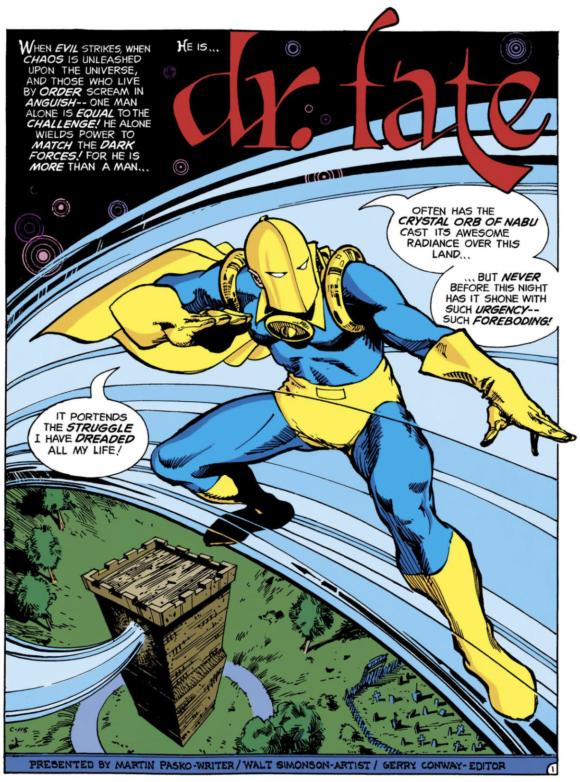
Issue #9
Although all of these concepts eventually found their way to comics readers again, only two projects were close enough to their original release date in 1st Issue Special to be considered spinoffs, even though they technically weren’t. But for argument’s sake, let’s just say that 1st Issue Special had a 15 percent success rate.
Here, then, are all 13 ISSUES OF 1ST ISSUE SPECIAL — RANKED:
—
13. Atlas (1st Issue Special #1). Jack Kirby had returned to DC in 1970-71 (launching his Fourth World concepts), after spending the previous 12 years ushering in the Marvel Age of Comics. Kirby was a constant fountain of ideas and DC was determined to get their money’s worth from Jack. In fact, out of the 13 issues of 1st Issue Special, Kirby contributed the ideas for three. That’s a record only matched by Gerry Conway (who either wrote or plotted three issues as well). Unfortunately for Atlas, he may have been the first 1st Issue Special idea of Kirby’s to see print, but he was also the worst. Atlas, as you would expect, has great strength. Which he uses as he ages from orphaned boy to muscle man, aided/raised by a mysterious traveller known as Chagra. Atlas is in possession of an alien crystal, which may have come from the Crystal Mountain. But before they can make their pilgrimage to this fabled land, they must first stop off to defeat the evil Hyssa the Lizard King (who is NOT a lizard), the person responsible for the slaughter of Atlas’ people. All this in 20 pages, folks.
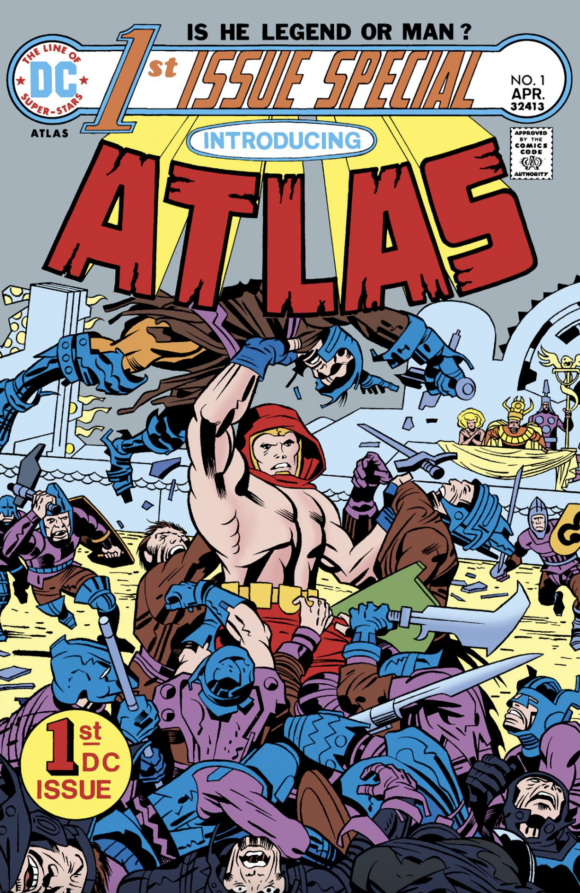
Did it Work? Atlas (subtitled “the Great” on the splash page… really?) wouldn’t make his second appearance until 2008, when James Robinson revived him for “The Coming of Atlas” arc that ran through Superman (Vol.1… there’s some legacy number shenanigans going on here) #677-680. He’s since made other appearances in Superman-related titles as part of “Project 7734” as an agent of General Sam Lane.
—
12. The Outsiders (1st Issue Special #10). Perhaps the strangest concept to come out of 1st Issue Special is the tale of Lizard Johnny, the Amazin’ Ronnie, Hairy Larry, Ol’ Doc Scary and Mighty Mary… a group of mutant freaks known as the Outsiders. The story begins at the end… with the Outsiders watching a TV bulletin about a mob attacking a Hector Hammond-like big headed child named Billy. The Outsiders spring into action and rush to fight off the mob, after which they break the fourth wall and explain to the readers each member’s origin. The story ends with Billy joining the team but then inexplicably shifts back to the beginning of the story where the Outsiders are watching the mob attack Billy. The Outsiders were created by Joe Simon and Jerry Grandenetti. With Jack Kirby, Joe Simon is best known as the co-creator of Captain America. On his own, he’s probably most known for his two-issue creation Brother Power, the Geek. The Outsiders are a few years removed from Brother Power but still have that attempt at hippie lingo and relevance that Simon just isn’t able to pull off.
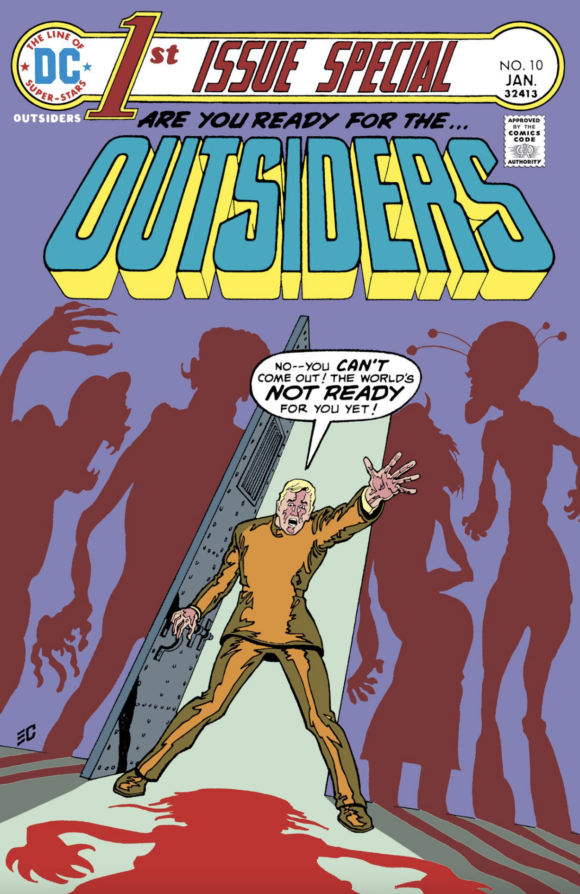
Did it Work? With such a bizarre first appearance, it’s no wonder there wasn’t any follow-up. The Outsiders logo, however, did reappear (slightly modified) as part of the original logo used for Batman and The Outsiders.
—
11. Codename: Assassin (1st Issue Special #11). “Possibly the Wildest Action Hero You’ve Ever Seen!” Or at least that’s what the copy says on the splash page. Created by Gerry Conway (and co-written with Steve Skeates) and art by the Redondo Studios (inks by Al Milgrom), the Assassin is Jonathan Drew, an, um, assassin with mental powers (telekinesis and telepathy) who is out to avenge the death of his sister at the hands of the mob. It’s nothing to write home about, but the idea of an orange and blue-clad assassin with increased mental abilities seemed to work better years later with Deathstroke the Terminator.
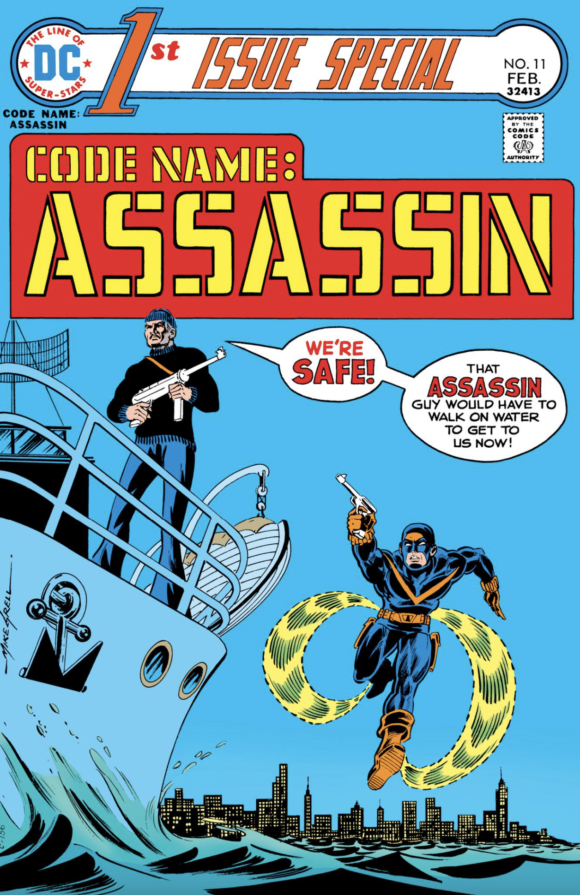
Did it Work? As for the Assassin, he (like his fellow agent in Project 7734, Atlas) was revived by James Robinson in 2008 (Superman’s Pal, Jimmy Olsen Special #1).
—
10. The Green Team: Boy Millionaires (1st Issue Special #2). Joe Simon and Jerry Grandenetti did a (slightly) better job with their first 1st Issue Special crew, the Green Team. Similar to the Boy Commandos and Newsboy Legion setup created by Simon (with Jack Kirby), the Green Team tells the tale of four “boy millionaires”: Abdul Smith (who parlayed his newspaper route into a financial success), Commodore Murphy (shipping magnate), J.P. Houston (oil mogul), and Cecil Sunbeam (Hollywood starmaker). Together they finance the Great American Pleasure Machine… much the chagrin of Broadway producer David D. Merritt. Merritt ends up spending a week inside the GAPM, which drives him mad, as our heroes go off to their next adventure. The End.

Did it Work? The Green Team would later make cameo appearances in books like Animal Man and Ambush Bug. The concept was revived as part of the New 52 in 2013. In this modern retelling, Commodore Murphy and J.P. Houston stayed (although J.P. was now Latino), while Cecil Sunbeam was gender-swapped to Cecilia (an actress) and Abdul Smith was kicked to the curb in favor of Mohammad Qahtani (a prince). This Green Team lasted only eight issues.
—
9. The Dingbats of Danger Street (1st Issue Special #6). Jack Kirby was back once again with a new boy group. The Dingbats of Danger Street consisted of Good Looks, Non-Fat, Krunch and Bananas. They’re allied with an adult, Lt. Terry Mullins, (think the Guardian and the Newsboy Legion) as they battle Jumpin’ Jack and the Gasser. That Kirby. Trying so hard to be hip. A few years too late though, as Jumpin’ Jack Flash was released by the Rolling Stones in 1968. The Dingbats weren’t the worst Kirby concept to make it into 1st Issue Special but they weren’t the best either.
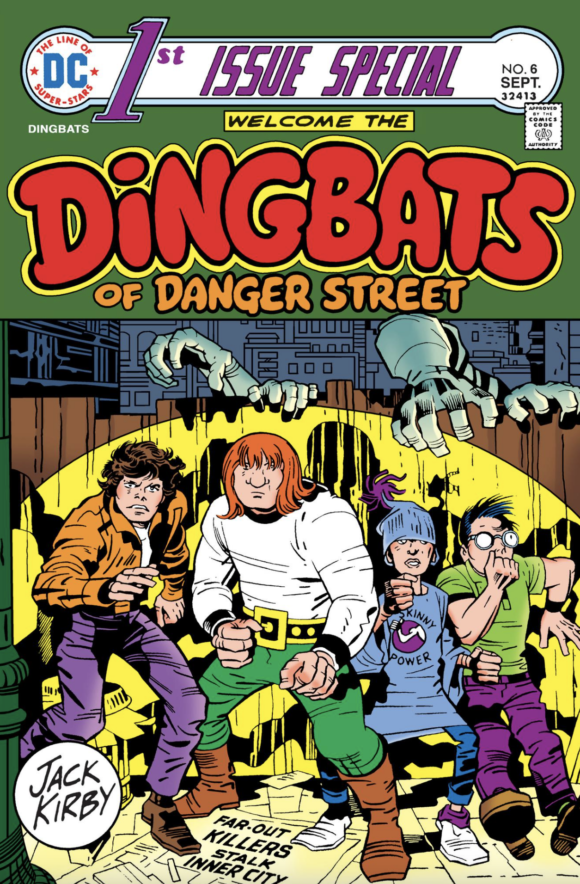
Did it Work? They’d lay low for decades until they were revived by Karl Kesel in Adventures of Superman #549 in a storyline that saw them in competition with the Newsboy Legion and the Green Team.
—
8. Manhunter (1st Issue Special #5). Manhunter was a character created by Jack Kirby for DC in 1941, first appearing in Adventure Comics #58. Paul Kirk started out as a regular private-eye, but by Adventure Comics #73, he was replaced by a new Manhunter, big game hunter Rick Nelson. That lasted for one issue, as Nelson was inexplicably changed to Kirk again. The new back story stuck and Manhunter carried on until #92 (1944).
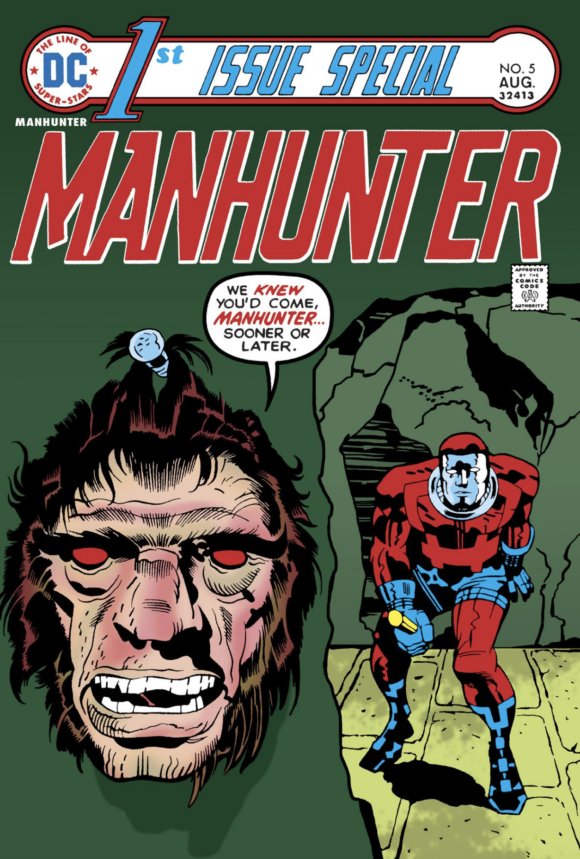
By 1973, he was revived by Archie Goodwin and Walt Simonson in the critically acclaimed back-up series that ran in Detective Comics #437-443. Strangely enough, DC greenlit a totally different Manhunter revival by Jack Kirby in 1975 for 1st Issue Special #5. This Manhunter was Mark Shaw, who inherited the mantle from an elderly Manhunter who seemed to be Paul Kirk (he’s never named in story). Mark discovers that there’s a secret society of Manhunters led by someone called the Grandmaster. This sets him up for conflict with the mobster Al Beefer aka the Hog. While this story is typical Kirby for the era, it’s really just a set-up for other stories to come.
Did it Work? Mark Shaw eventually returns as the Privateer (a hero) and the Star-Tsar (a villain) in the pages of Justice League of America (which also incorporated the Manhunters into Green Lantern’s mythology). Mark Shaw later becomes a member of the Suicide Squad (as the Privateer) before spinning off into his own series (as Manhunter) in 1988. Since then, he’s gone back and forth between hero and villain, using various identities.
—
7. Lady Cop (1st Issue Special #4). Created by Robert Kanigher and John Rosenberger (and inspired by Angie Dickinson?), Liz Warner witnesses the murder of her two roommates and decides to become a police officer. Her only clue? The killer wears cowboy boots emblazoned with a skull and crossbones and leaves a calling card. the Ace of Spades. After she completes her training at the police academy, we’re treated to vignettes of Liz (aka Lady Cop) handling a would-be rooftop rapist, a fruit-stand robbery, and a girl with VD. Not to mention some downtime with her boyfriend at the beach! This was obviously not standard fare for DC Comics at the time (seems like she’d be more at home at the House of Ideas with Night Nurse).
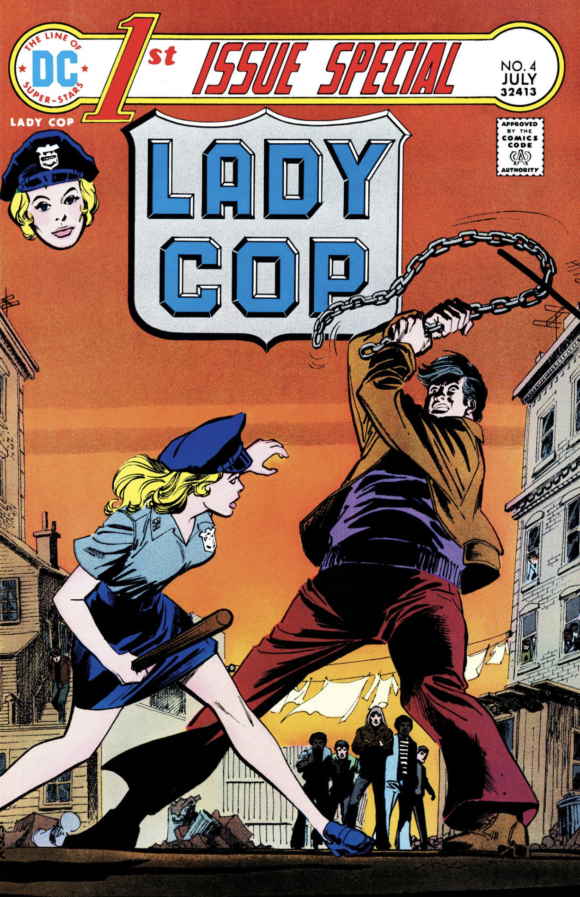
Did it Work? There’s a LOT of love for Liz Warner. She was revived by Gail Simone in All-New Atom #6 (2007) and was featured on the fourth and fifth seasons of CW’s Arrow (2015-2017). That’s saying something. I wonder if she ever found the Killer in Boots?
—
6. Return of the New Gods (1st Issue Special #13). Jack Kirby’s Fourth World saga effectively ended when he left DC and went back to Marvel in 1975. Mister Miracle lasted the longest (18 issues; it was later revived in ’77 for seven issues) and Forever People and New Gods both ended with 11. In 1976, Gerry Conway, Denny O’Neil and Mike Vosburg were tapped to try out a New Gods return in the pages of 1st Issue Special. The result was a slightly more superhero approach, signified by the costume change for Orion.
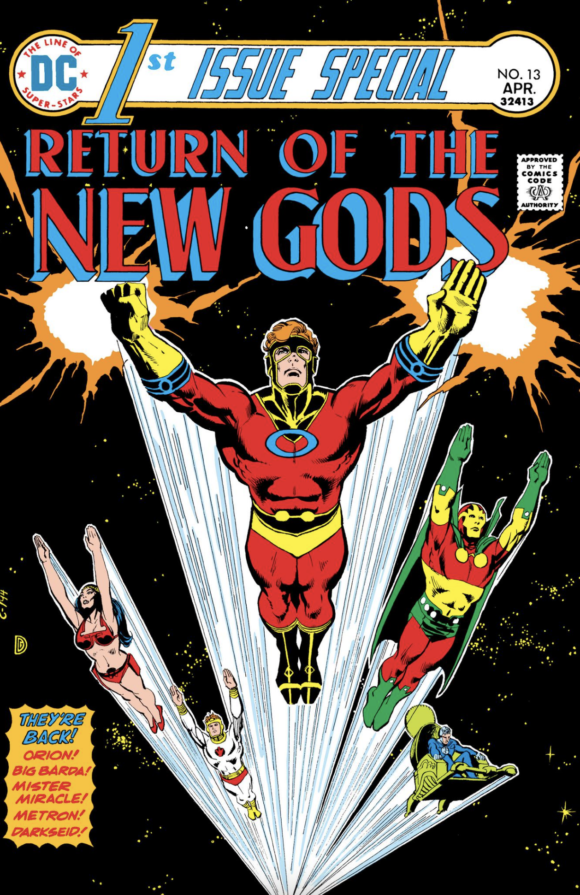
Did it Work? This eventually led to an actual revival of the original New Gods series in 1977 (with #12) by Conway and Don Newton. In fact, it was one of only two series to actually spin out of 1st Issue Special. Unfortunately, it didn’t stick, thanks to the DC Implosion, and #19 was the last. The final chapters were burned off in the Dollar Comics version of Adventure Comics #459-460, ending with the final defeat and death of Darkseid. At least until he returned in the annual JLA/JSA crossover (with the New Gods in tow) in Justice League of America’ #183-185 (1980). Since then, Darkseid has become a major player in the DC Universe. You can’t keep a bad god down.
—
5. Starman (1st Issue Special #12). Created by Gerry Conway and Mike Vosburg, this version of Starman was a blue-skinned alien (Mikaal Tomas) who originally came to Earth to conquer it, but in Silver Surfer style, changed his mind and decided to protect it. The story ends on a cliffhanger, as Starman squares off against his foe Turran Kha. At the time of publication, Mikaal Tomas was the second character to headline the “Starman” title (after the Golden Age Ted Knight version).
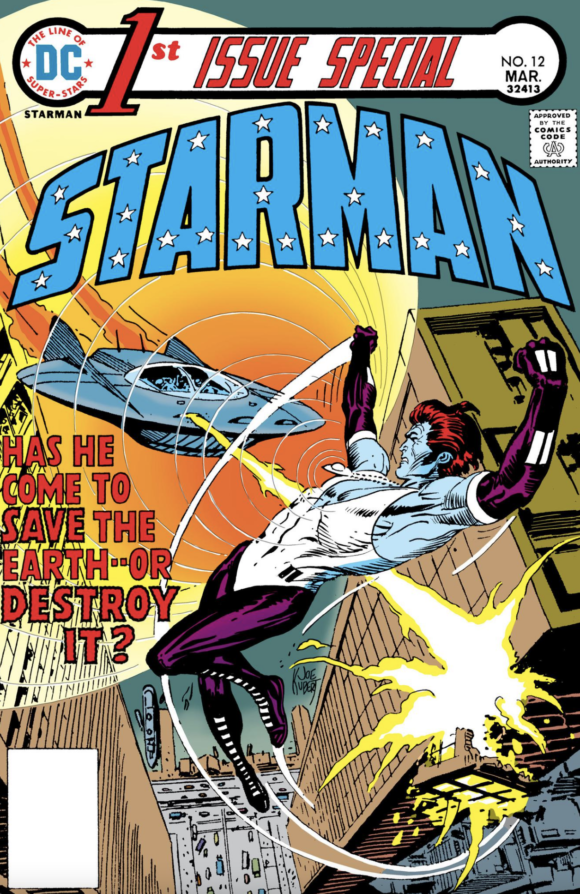
Did it Work? When he was revived as part of James Robinson’s “Starman’ series (Vol. 2 #3) he retroactively became the third to bear the mantle. He became an important ally to the Jack Knight (Ted’s son) version of Starman and was one of DC’s first openly gay superheroes. He’s popped up on occasion since then, most notably as a member of the JLA in Robinson’s Justice League: Cry for Justice.
—
4. The Creeper (1st Issue Special #7). This was the first 1st Issue Special I ever bought, albeit as a back issue (and probably one of the first handful of back issues I bought at my first comic shop, The Lost World). The Creeper (created by Steve Ditko) first appeared in Showcase #73 (April 1968), before graduating to his own series Beware the Creeper, which only lasted six issues. After a number of Bronze Age appearances in Detective Comics and The Joker, it was decided to give the Creeper another solo tryout. Written by Michael Fleisher with art by Ditko (and Mike Royer), “Menace of the Human Firefly” is a Silver Age-style romp as Jack Ryder’s alter ego takes on an old Batman foe, the Firefly. It’s a fun story but probably not quite what Bronze Age fans were looking for at that point. And although this appearance didn’t launch a new ongoing series, the Creeper did continue to pop up as a guest-star and back-up feature throughout the 70s.
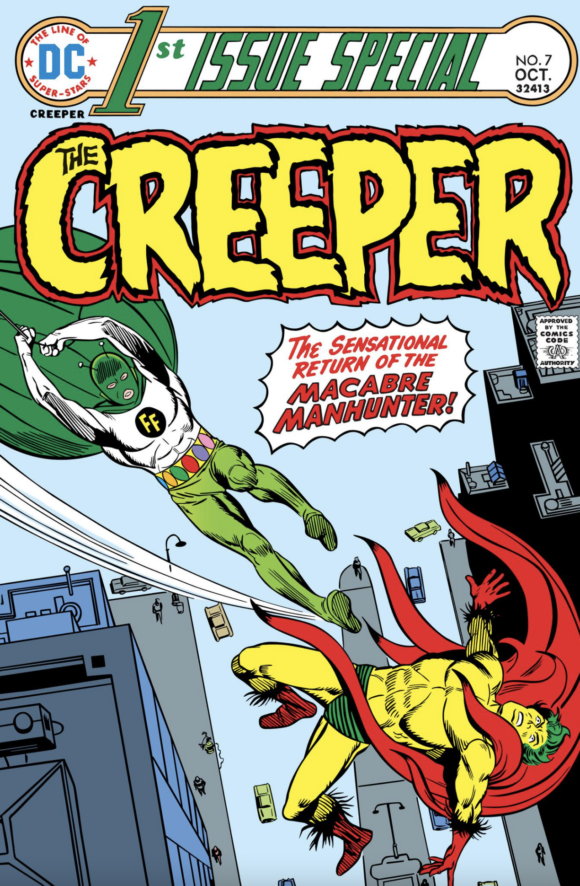
Did it Work? It wouldn’t be until 1997 that the Creeper would get his own series again (The Creeper Vol. 1), lasting only 12 issues. Another attempt in 2006 fared worse, with only six issues. In between these two series, DC’s Vertigo imprint took a crack at the concept (minus Jack Ryder) with the five-issue Beware The Creeper (Vol. 2) in 2003. But never fear, the Creeper can always be counted on to pop up again, when you least expect it.
—
3. Metamorpho the Element Man (1st Issue Special #3). This is just a really fun comic. With story by Bob Haney and art by Ramona Fradon (his creators!), it’s as if this is a long-lost installment of the Element Man’s 17-issue original series that ran from 1965-’68. Metamorpho had been popping up as a guest-star for Batman in The Brave and the Bold for years after his series had ended, in addition to back-ups in Action Comics and World’s Finest Comics. (He actually debuted in B&B when it was still a tryout book in the ’60s.) By 1974, Haney and Fradon met up at San Diego Comic-Con and decided to do it one more time, just for the fun of it. And it shows! Everything you remember about the original strip is there. Simon Stagg! Sapphire Stagg! Java! It’s perfect. Except…it didn’t lead to an ongoing.
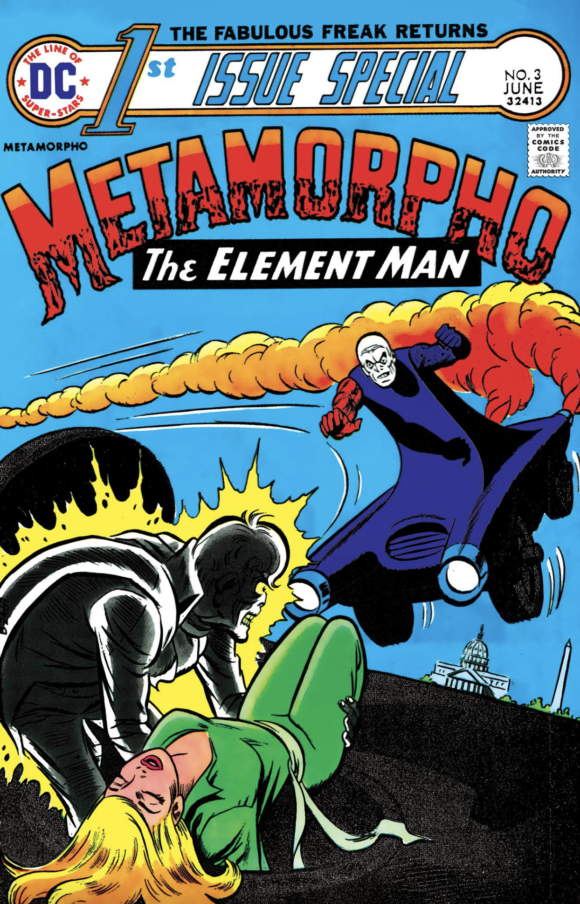
Did it Work? Metamorpho became a team player, as part of Batman and the Outsiders (1983), Justice League Europe (1989) and The Terrifics (2018). He’d have miniseries in 1993 and 2007 but, nope, no ongoing. Perhaps it’s just as well. Nothing could match the original series and its creative team. 1st Issue Special #3 is the perfect cap to that magic. Some things are best left in the past.
—
2. The Warlord (1st Issue Special #8). The greatest success to come out of 1st Issue Special. Created by Mike Grell, you’re invited to “Enter the Lost World of The Warlord.” Spinning out of a previous comic-strip concept Grell had called “Savage Empire,” the Warlord was Lt. Colonel Travis Morgan, a USAF pilot who crash lands in the underground world of Skartaris at the Earth’s core. There he encounters the barbarian Princess Tara, dinosaurs, and the evil sorcerer Deimos. It’s a quick origin but it establishes the basic conflict for a series as Morgan and Tara find themselves on the run from Deimos through the jungles of Skartaris.
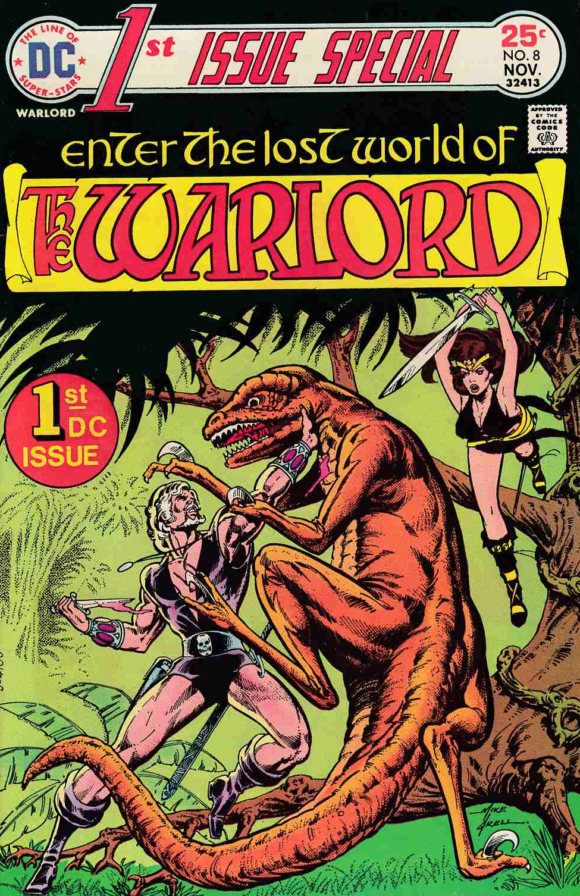
Did it Work? An ongoing series had already been greenlit before 1st Issue Special #8 had even hit the stands in 1975; The Warlord #1 followed three months after his debut. There was a brief blip, when the title was on an eight-month hiatus between Issues #2 and #3, but beyond that it was a long-running series (133 issues and six annuals) throughout the ’70s and ’80s. There were revivals in 1992, 2006 and 2009, but none of them lasted very long. Still, The Warlord is DC’s premier “sword and sorcery” title, outlasting its other counterparts such as Beowulf; Arak, Son of Thunder; Hercules Unbound; and Claw the Unconquered.
—
1. Dr. Fate (1st Issue Special #9). Dr. Fate was created by Gardner Fox and Howard Sherman in More Fun Comics #55 (May 1940) and was a leading member of the Golden Age Justice Society of America in All-Star Comics. He didn’t return to the funny pages until the Silver Age, again as a member of the JSA, showing up in their crossover appearances with the Justice League each year. After a few pop-ins over the years in some team-up titles, Dr. Fate was finally given a full-length story in 1st Issue Special #9, written by Martin Pasko with art by Walt Simonson. In the story, the good Doctor recounts his origin while battling Khalis the mummy. It’s a fantastic Bronze Age take on a Golden Age character that is full of sizzle and doesn’t feel at all stodgy like the Golden Age stories that were being reprinted in the 100-Page Giants of the era. With script and art like this, these characters could be viable once again. At least I’m sure that’s what some people thought. In fact, perhaps that thinking is what led to All-Star Comics being revived with Issue #58 (Jan. 1976), featuring the JSA (with Dr. Fate being the largest character on that cover).
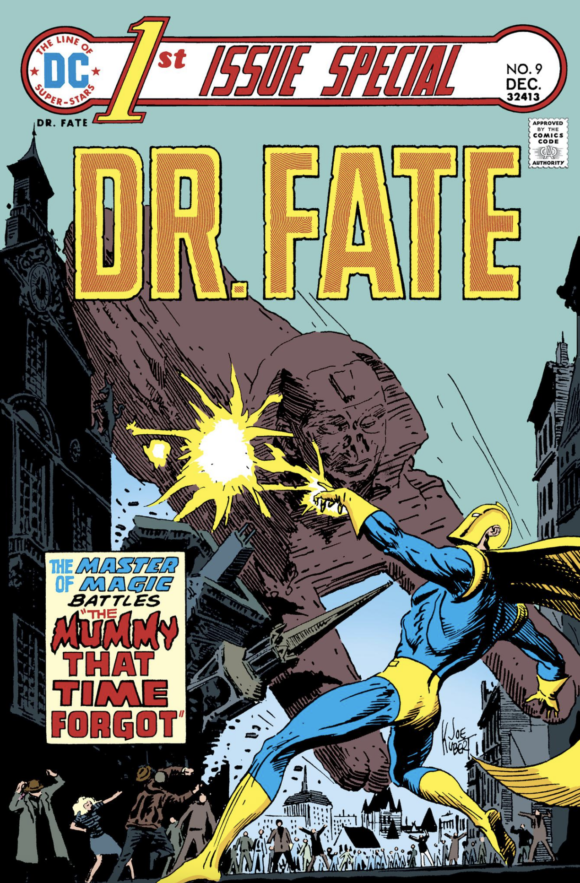
Did it Work? It would be quite awhile longer before Dr. Fate would receive his own title. First, he became a back-up feature in The Flash #306-313 (1982). Then, his 1st Issue Special was reprinted in DC Special Blue Ribbon Digest #3 (1980). It was also reprinted (along with his Flash backups and a few other appearances) in a three-issue collection, The Immortal Dr. Fate (1985). By 1987, he was finally ready for his first miniseries, Doctor Fate #1-4, featuring all-new material. That was followed by a 42-issue ongoing beginning in 1988. Since then, Dr. Fate (or an altered form of the concept) has been revived in 1994, 2002, 2007 and 2015. Although he was usually overshadowed by other JSA members (the Flash, Green Lantern and Hawkman, for example), Dr. Fate has been a constant in the DC Universe for decades now. He even joined the Justice League and had a Super Powers action figure! And it really kicked off with his solo outing in 1975.
—
MORE
— 13 Classic DC COMICS Runs That Need Book Collections. Click here.
— 13 REASONS to Love DC in the BRONZE AGE. Click here.
—
Anthony Durso is the owner of Retropolis Tees and the custom toy-package website The Toyroom.

September 1, 2022
The concept for The Warlord sounds very similar to Filmation’s animated series Blackstar in terms of both heroes plunged into strange worlds to fight a terrible villain. The Filmation series came many years later. I didn’t read The Warlord, but I did read the early issues of Beowulf; and Claw the Unconquered.
September 1, 2022
I often cite that DR. FATE issue as one of the greatest single comics of the Bronze Age. What a perfect match of character and creators.
September 1, 2022
I wonder if any serious thought was given to an ongoing Dr. Fate series with same creators at the helm. Seem that everyone loves that issue, myself included, that it deserved further attention at the time.
September 2, 2022
I’m really surprised that Atlas wound up at the very bottom of the stack! I remember it as nothing special, but Man! Beaten out by the Outsiders, Dingbats AND the Green Team? I’ve gotta go re-read it now…
September 10, 2022
I remember these! I have the Metamorpho, Creeper and Dr. Fate titles! Pasko’s Fate title may have been the first to establish that Dr. Fate was “slightly schitzo” as Inza would put it. Good stories and loads of fun!